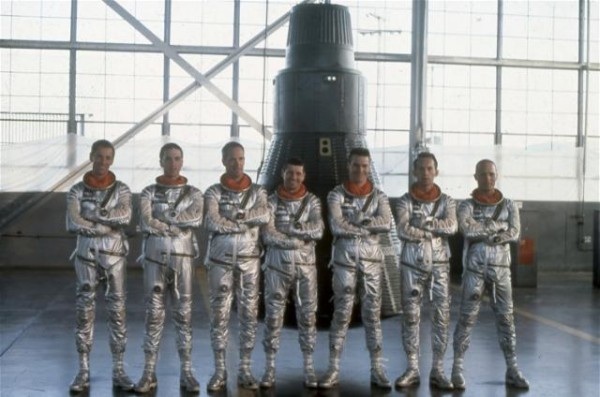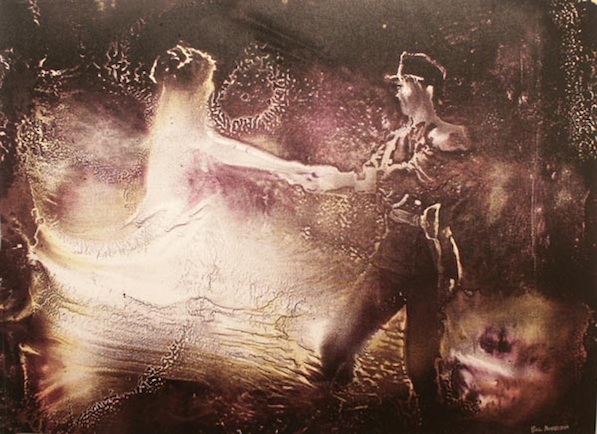Lists are catnip for a whole swath of movie lovers. But only one list tallies the most important films ever made in the United States, the ones that delineate the American experience, depict American history and define the American character. Stamping particular films as irreplaceable works, which can never be replicated and should be preserved and protected for future generations, is what the Library of Congress has been engaged in since Congress passed the National Film Preservation Act in 1988.
The library is empowered every year to add 25 titles to the National Film Registry that it deems “culturally, historically or esthetically significant.” Anybody can suggest a work for inclusion, though the Librarian of Congress makes the annual selection with input from the National Film Preservation Board. Incidentally, films must be at least ten years old to qualify for inclusion.
Before we get to the 2013 picks announced this week, it’s worth remembering that the campaign for the National Film Registry was led by filmmakers powerless to prevent their work from being cropped, chopped and/or colorized (one of Ted Turner’s lesser brainstorms) by cable TV networks or for VHS releases by the major studios. The case was successfully made to Congress that movies weren’t simply products with a shelf life but touchstones of our cultural and artistic heritage. This was no small achievement during the Reagan decade of rampant deregulation and free-market sycophancy.
Films Selected for the 2013 National Film RegistryBless Their Little Hearts (1984)
Brandy in the Wilderness (1969)
Cicero March (1966)
Daughter of Dawn (1920)
Decasia (2002)
Ella Cinders (1926)
Forbidden Planet (1956)
Gilda (1946)
The Hole (1962)
Judgment at Nuremberg (1961)
King of Jazz (1930)
The Lunch Date (1989)
The Magnificent Seven (1960)
Martha Graham Early Dance film (1931-44)
Mary Poppins (1964)
Men & Dust (1940)
Midnight (1939)
Notes on the Port of St. Francis (1951)
Pulp Fiction (1994)
The Quiet Man (1952)
The Right Stuff (1983)
Roger & Me (1989)
A Virtuous Vamp (1919)
Who’s Afraid of Virginia Woolf (1966)
Wild Boys of the Road (1933)
Filmmakers argued at the time that the integrity of the original work was at stake, and often something more: Its very existence. Celluloid deteriorates, and profit-oriented studios preserved only the films they perceived as still having commercial potential. The vast majority of silent films had been destroyed or lost years earlier, and it turned out that a large number of sound films made before 1950 had disintegrated in their cans. The National Film Preservation Act stemmed the tide somewhat, and drew attention to the ongoing crisis, by collecting an archival print and ancillary materials of every work added to the National Film Registry. (We may not want to tell Paul Ryan about the infinitesimal amount of Federal money allotted to the NFPB, lest he axe the budget and demand that the Library of Congress destroy its collection, including Mr. Smith Goes to Washington.)
Although the majority of works selected for the National Film Registry over the subsequent twenty-five years are recognizable Hollywood titles, the collection encompasses documentaries, avant-garde films, cartoons, indie features and important snippets (such as the pioneering thirty-second blacksmithing scene filmed by Thomas Edison’s company in 1893). This is the key distinction between the National Film Registry and the numerous compilations (www.afi.com/100years/) advanced by the American Film Institute as a de facto PR arm of the Hollywood studios. While the AFI lists serve the valuable function of touting the films of earlier eras to new generations of filmgoers, they arguably discourage the discovery of movies outside the certified and embalmed canon of American cinema.
Libraries are not instigators of controversy, generally, but the Library of Congress announcement every December inevitably adds fuel to the yule log. For my money, the top choices in the Class of 2013 are Wild Boys of the Road (1933), William Wellman’s clear-eyed depiction of runaway youths at the height of the Great Depression; Notes on the Port of St. Francis (1951), Frank Staffacher’s poetic portrait of San Francisco; a quartet of dance films featuring the extraordinary choreographer-dancer Martha Graham made between 1931 and 1944; Cicero March (1966), an eight-minute verité record of an anti-segregation protest (complete with the Chicago-area residents’ racist vituperations); and, fittingly, Decasia (2002), Bill Morrison’s feature-length, found-footage assemblage of deteriorating nitrate film images.
I can also get on board with the inclusion of three silent films: Daughter of Dawn (1920), featuring a cast comprised entirely of Native Americans and authentically depicting Comanche and Kiowa customs and traditions; Ella Cinders (1920), a comedy starring Colleen Moore; and A Virtuous Vamp (1919), a satire starring Constance Talmadge in an Anita Loos screenplay.
There are other rare and worthy films among this year’s picks, as well as Philip Kaufman’s iconic rendering of Tom Wolfe’s The Right Stuff (1983) and Mike Nichols’ beautifully photographed and impeccably acted adaptation of Edward Albee’s Who’s Afraid of Virginia Woolf? (1966). I am significantly less impressed by the inclusion of Pulp Fiction (1994), The Magnificent Seven (1960) and, to a lesser degree, Mary Poppins (1964). (The timing of the last title is especially nice if you are opening Saving Mr. Banks in theaters this month.)
Paul Mariano and Kurt Norton’s informative and affectionate 2011 documentary These Amazing Shadows: The Movies That Make America not only provides an accessible entrée to the National Film Registry but explores what it is about movies that inspires such deep feelings in so many people. Daniel Eagan’s marvelous 2010 book, America’s Film Legacy, covers every film in the National Film Registry up to that point and, in so doing, provides a prismatic history of American movies—and America. One thing, in particular, is clear: The National Film Preservation Board and the Librarian of Congress have done a diligent, admirable and often inspired job of choosing films.
For the complete list of year-end lists on Keyframe, go to The Year in Film: 2013.
For the complete index of the films on these lists, go to 2013 Year in Review: Indexed.






